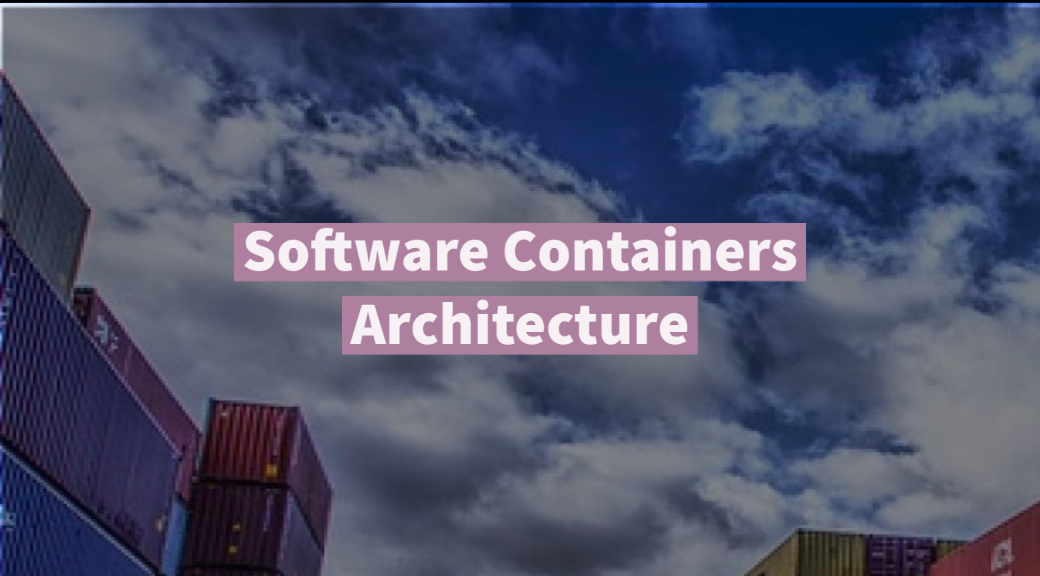When properly integrated, software containers architecture can be strategically deployed to improve your development, deployment, and delivery pipeline. Containerization strategies bundle your application together along with its binaries, repositories, configuration files and documentation. Once bundled together, these files are stored in sealed ‘containers,’ where they are immutable to updates, modifications, patches, or configuration changes. Container architecture provides a reliable solution for moving applications from one cloud computing environment to another. Experienced development teams recommend containerization practices to improve the portability, security, and transferability of completed software programs. Instilling a containerized strategy, you can limit development risks, harness the power of advanced technology, and configure sophisticated, bug-free software programs.
Read on to learn about using software containers architecture to improve development and delivery.

Contents
Consistent Operating Environments
Advanced software container architecture can largely improve delivery and deployment through consistent operating environments. With containers properly equipped, you can improve the ability to predict operating environments that are fully isolated from other applications. Sealed containers guarantee that language runtimes, software libraries, and configuration files remain consistent no matter where the application is ultimately deployed. Ensuring consistent operating systems, you can spend less time diagnosing specific problems and debugging your development environment. With consistency in your operating environments, you can minimize risks and prevent threats when your system fails. Utilizing container technology, you can ensure consistent operating environments for your upcoming software project.
Advanced Container Registries
Advanced container registries are essential resources to streamline the efficiency of your software development, deployment, and delivery pipeline. Container registries are collections of repositories that are specifically configured to store container images. To ensure efficient storage, these registries are hosted by third-parties or public and private registry managers. A container registry serves as an essential resource to support your Docker containers and Helm Chart repositories across Kubernetes deployments. When properly integrated, an advanced container registry provides reliable, consistent, and efficient access to remote Docker container registries. Advanced container registries are excellent resources to improve the efficiency of your software development and delivery pipeline.
Enhanced Distributed Computing Capabilities
Utilizing container architecture allows you to utilize enhance distributed computing capabilities to enhance your software development, delivery, and deployment. A single application can divided into multiple domains. With a containerization strategy in place, all these domains and integral files will reside within secure containers. With enhanced portability, containers can be executed on a number of different cloud platforms. Through these efficient cloud-based solutions, you can choose specific platforms for your program to run on based on specific performance and cost efficiencies. Sophisticated software containers allow you to take advantage of enhanced distributed computing capabilities.
Containerized Isolation
Sophisticated containerization strategies allow you to take advantage of isolation in order to improve software development and delivery. Containers virtualize critical aspects like network resources, storage, memory, and CPU. All of these integral aspects are virtualized at the operating system level. Through advanced virtualization, you can receive an updated, sophisticated view of your operating system that is logically isolated from other applications. This way, if another application is having issues or downtime on the server, your application is less likely to be impacted. Utilize sophisticated containerization strategies in order to take advantage of OS-level isolation.
Harness The Power Of Automation
Utilizing sophisticated container technology, you can harness the power of automation to improve software development and deployment. Sophisticated container platforms utilize the power of automation to enhance your software development pipeline. Containerized platforms utilize an automation layer that locates the best platform to execute programs on. After identifying this platform, AI-enabled technology can auto-migrate your software program directly to that platform. Throughout the process, automated resources are able to identify and manage configuration changes automatically. Through artificial intelligence algorithms, you can streamline efficiency, reduce risk, and improve performance. Utilize advanced containerized resources in order to harness the power of automation across your software development and delivery pipeline.
Through the strategic use of software containers architecture, experienced development teams can largely improve the efficiency of their development, deployment, and delivery pipeline. Utilizing container technology, you can ensure consistent operating environments for your upcoming software project. Sophisticated container registries are excellent resources to improve the efficiency of your software development and delivery pipeline. At the same time, instituting these practices allows you to take advantage of enhanced distributed computing capabilities. Moreover, integrate sophisticated containerization strategies to take advantage of OS-level isolation. Furthermore, utilize advanced containerized resources to harness the power of automation across your software development and delivery pipeline.
Consider the points mentioned above to learn about using software containers architecture to improve development and delivery.
